As the USGA looks to roll back the ball because of the current performance of elite male professionals, a new distance study from Arccos, the leading GPS stat tracker of recreational players, suggests that there is no cause for concern when it comes to the distance habits of the paying customers.
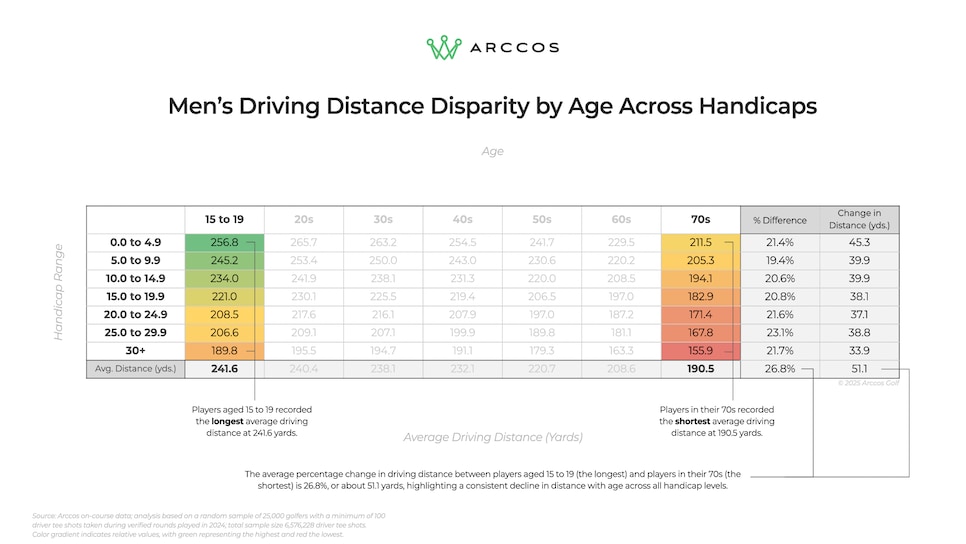
In the company’s annual distance report, the numbers suggest average driving distance for people who play the game for fun, both men and women, hasn’t budged since 2018. Based on data from 4 million rounds recorded by Arccos in 2024, the average driving distance for men was 224.7 yards. That’s 0.7 yards more than it was in 2018, the first year of the survey. For women, average driving distance in 2024 was 176.2 yards, down three yards from 2018. That trend mirrors Arccos reports in past years.
For perspective, in that same time frame, average driving distance on the PGA Tour for all drives has increased nearly six yards from 286.9 yards in 2019 to 292.8 yards in 2024. Meanwhile, average driving distance on the LPGA Tour is up nearly seven yards to almost 260 yards, although technically the LPGA number is essentially unchanged since 2019.
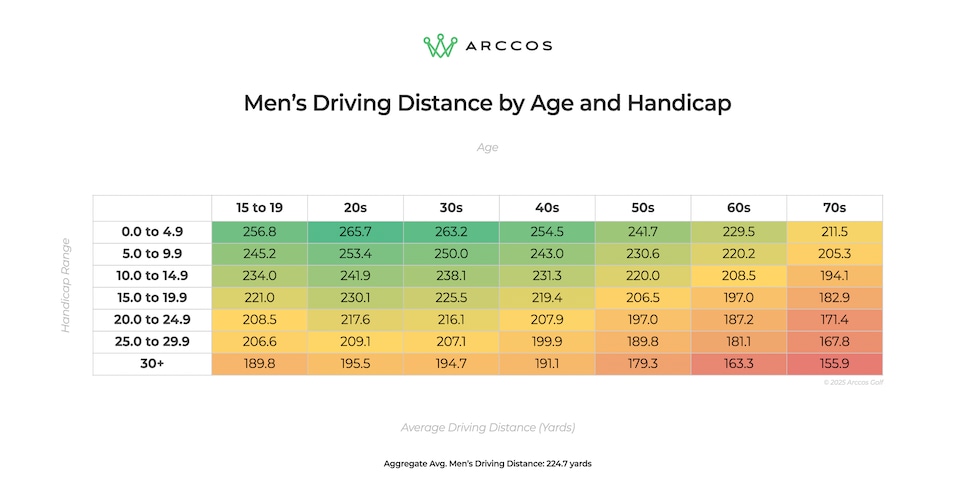
To be clear, the focus of the ball rollback, which is scheduled to go into effect for elite golfers in 2028, is its effect on the longest hitters. The USGA projects that the new test standards would lead to a decrease in the driving distance of the longest hitters by 12-15 yards. At the same time, the USGA predicts the shorter ball will affect average golfers by less than five yards. The rule change would mean all balls introduced for 2028 would need to meet the new, shorter standard, and all golfers, even those simply posting scores for handicap purposes, would need to use the new “shorter” ball starting in 2030.
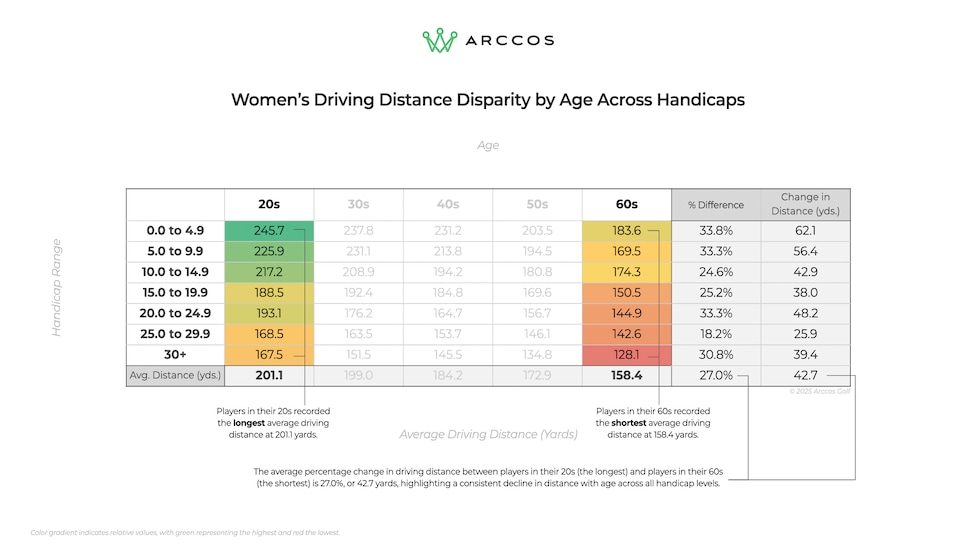
While the flatline on distance numbers that Arccos has seen since it started tracking average golfer data in 2018 may seem disappointing, that’s not to suggest that technology hasn’t improved driving distance at the recreational level. The R&A studied distance for average golfers between 1996 and 2019. That research showed average driving distance in 1996 for men to be approximately 200 yards. While it’s not an apples-to-apples comparison, the current Arccos numbers suggest average golfers have gained about 25 yard in the last three decades.
The Arccos data also doesn’t seem to offer evidence that the improvments in equipment technology, specifically the improvement in off-center hit performance, are helping those less skilled more than better players. In other words, since driver technology largely is focused on making your worst hits better, it would seemingly stand to reason that those players who produce more of those worst hits more often might see greater gains over time because they’re improving an area that needs a lot of improvement. Conversely, the best players theoretically aren’t missing the center of the face that much so real improvements in mis-hits may not even be noticed by them. But raising the performance floor for below average players isn’t showing up in the data. Those with handicaps over 20 in the Arccos study barely are gaining a yard since the Arccos surveys began in 2018, which pretty lines up with how much better players (0-5 handicaps) have gained in the same time frame.

The Arccos numbers present a picture that not only is driving distance for recreational golfers stagnant, it gets worse as they age, as well as when handicaps are lower. Arccos estimates that male golfers lose nearly 55 yards of distance between their 20s (240.4 yards) and their 70s (195.5). And the greatest of the losses are coming just as life affords them the opportunity to play more golf. They lose more than 30 yards between their 50s and their 70s. Meanwhile, the same is true for women golfers, who lose an estimated 27 percent of their distance between their 20s and their 60s, dropping from an average of 201 yards to an average of 158 yards. If you’re traumatized by those losses, there are some counter measures to mitigate those shortcomings that our Luke Kerr-Dineen details here.
In terms of handicaps, those men in the low single digits (0-5 handicap) average 50 more yards of distance than those with handicaps 20 and higher, and they are 25 yards longer than those with handicap between 10 and 15. For women, those with handicaps between 5 and 10 hit drives an average of 37 yards longer than those with handicaps between 20 and 25.
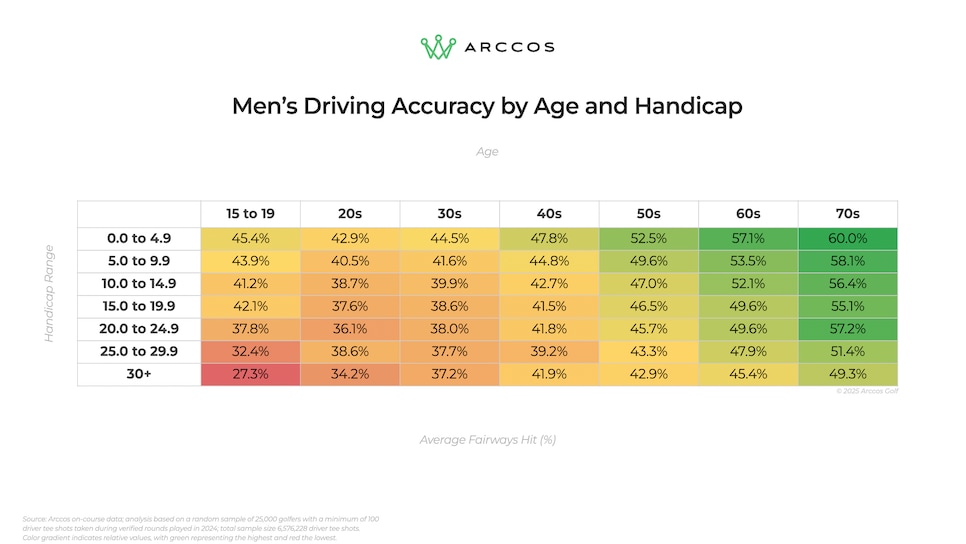
There is a silver lining for those who are aging, however. Arccos’ data said older golfers are more accurate. Among men, players in their 20s barely hit 40 percent of fairways, while those in their 70s recorded the highest driving accuracy percentage of any age group at 56.5 percent. In general, women were more accurate than men at any age, but older women (60s) were hitting the fairway an average of 62 percent of the time, but only 45 percent of the time in their 20s.
While golf’s governing bodies have maintained consistently that the rules for rolling back the ball in 2028 are firmly in place, both the PGA Tour and PGA of America continue to oppose the rule, the latter asserting its position again at the recent PGA Championship. The USGA will conduct a press conference at the U.S. Open next week at Oakmont Country Club. It is likely the distance question will be a topic again, and this latest information suggests—as it has for decades—that average golfers pose no growing threat to obsoleting golf courses.
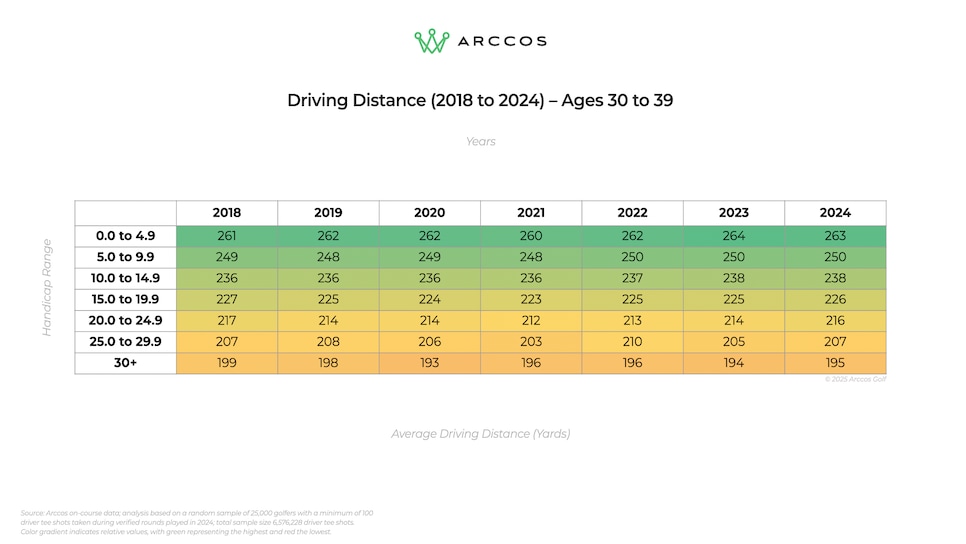
For more of the Arccos distance report, click here.
This article was originally published on golfdigest.com




